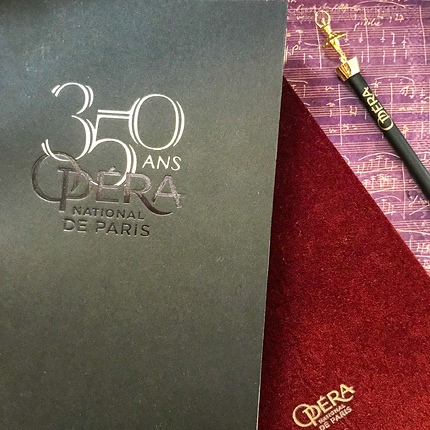Prices
Show / Event
Venue
Experience
No result. Clear filters or select a larger calendar range.
No show today.
© / BnF, département de la Musique, Bibliothèque-musée de l’Opéra

A closer look at...
Caroline Miolan-Carvalho dans le rôle de Marguerite dans "Faust" de Charles Gounod - © / BnF, département de la Musique, Bibliothèque-musée de l’Opéra

Hitherto virtuous, Marguerite is corrupted by the diabolical Mephistopheles, who sends her a casket of jewels to persuade her to surrender to Faust.
Adorned with her jewels, the young woman contemplates herself in a mirror and becomes enraptured by her own beauty in the most famous passage from Charles Gounod’s opera : the Jewel song.
Set in Act III, at the heart of the work, this scene is a perfect illus- tration of the librettists’ use of jewellery as a theatrical device.
Maquette de costume de Lucienne Bréval pour le rôle de Brünnhilde dans "La Walkyrie" de Richard Wagner, mise en scène d’Alexandre Lapissida - © / BnF, département de la Musique, Bibliothèque-musée de l’Opéra

Although most of the warriors in opera and ballet are men, the Valkyries are an exception to the rule.
In Richard Wagner’s Ring, these nine daughters of Wotan, the god of gods, are responsible for collecting the mortal remains of fallen heroes and taking them to Valhalla.
Their power is embodied in a special accessory, their armour, whose metalwork is similar to that of stage jewellery.
Célestine Galli-Marié en costume de scène dans le rôle de "Carmen" - © / BnF, département de la Musique, Bibliothèque-musée de l’Opéra

‘If you don’t love me, I love you’: this most famous aria from Georges Bizet’s opera Carmen, inspired by Mérimée’s short story, represents a new vision of the femme fatale, both sensual and venomous.
Freedom-loving to the point of death, the cigarette factory girl, first played by Célestine Galli-Marié at the Opéra- Comique on 3 March 1875, was all the more scandalous as the singer adopted a realistic style, in accordance with the composer’s wishes.
Three months after the premiere, Georges Bizet died aged just 37, never imagining that his opera would become one of the most famous and best-loved works in the operatic repertoire. While the jewellery she wears may seem lavish for a cigarette factory girl, it underscores the free-spirited woman’s seductive appeal.
Coiffe pour "L’Africaine" de Giacomo Meyerbeer - © / BnF, département de la Musique, Bibliothèque-musée de l’Opéra

At Giacomo Meyerbeer’s death in 1864, “grand opéra” began to decline.
In that sense, the posthumous L’Africaine, first performed in 1865 at the Salle Le Peletier and revived at the Palais Garnier in 1877, was an ambiguous tribute.
Indeed, as the finery of the Westerners (here, the Portuguese) rivals that of the Africans (from the imagina- ry kingdom of Sélika), one wonders whether their compa- rable pomp nullifies the dominion of the conquering over the conquered.
Collier-plastron pour "Aida" de Giuseppe Verdi - © / BnF, département de la Musique, Bibliothèque-musée de l’Opéra

Giuseppe Verdi’s Aida, inspired by the Egyptologist Auguste Mariette (1821-1881) and first performed in Cairo in 1871, contributed to the Egyptomania that arose after Napoleon Bonaparte’s expeditionary campaign (1798-1801).
The costume sketches from the production bear witness to this, as do the accessories for the version presented at the Palais Garnier in 1880.
In short, whilst at the turn of the 19th century scholars drew on the talents of artists involved in the expedition to spread knowledge of a foreign world in the West (hence the publication of Description de l’Égypte, 1809), by the end of the century the opposite was true : costume designers and jewellers were nourishing their creations with the discoveries of archaeologists.
Stage jewellery at the Paris Opera - Exhibition
PRACTICAL INFORMATION
From 28 November 2024 to 28 March 2025 inclusive, at the Paris Opera Library Museum - Palais Garnier
The exhibition is accessible as part of a visit to the Palais Garnier, except on days when it is closed for special events (check calendar) :







